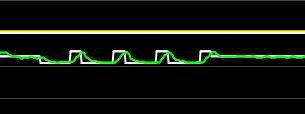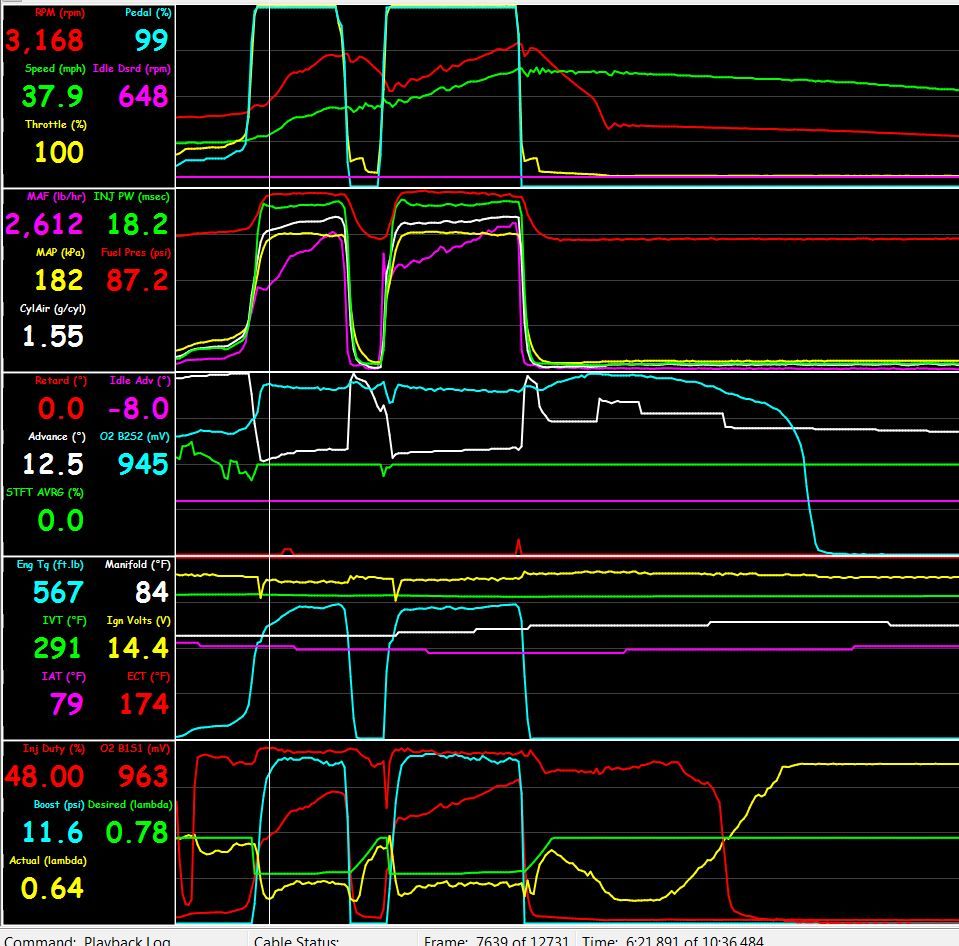I've had an issue with tuning my LSA/E67/PLX wideband setup that I finally figured out. The wideband was giving me very misleading information.
For those that don't know me, I'm not a newb. (no offense, we were all newbs at some point!) I know about wideband offsets and voltage errors. I've done more tuning on factory widebands (E69/LNF's) than anything else. I know how widebands are supposed to work. This is something different than a simple wideband setup or scanner configuration issue. At this point I honestly can't say whether it's a problem that only exists in my particular hardware setup, or is something that only exists with the PLX wideband. (I just looked on the PLX website to see exactly what Bosch sensor I have, and see they have a new Gen 4 Bosch sensor. I bought my setup a year ago, I'll be calling PLX on Monday to see if mine is the Gen 3 or Gen 4. If it's the Gen 3, then the new Bosch sensor may solve my particular issue.)
What I've been dealing with is shown in these log screen shots. When I go full throttle, the wideband reads lean for a little less than a second, then reads exactly what it should. This will happen at ANY rpm and ANY airflow points, so this IS NOT something that can be nailed down in the tune. That's what's made this difficult. At first I thought is was actually lean like the wideband was showing. The wideband seems to react very quickly to other mixture changes, why would it react slowly in this one particular situation? I tried the usual MAF and transient changes to try to get more fuel during the first half second or so of a full throttle hit. I couldn't get rid of the lean indication. My butt dyno actually showed I was loosing power even though it was reading lean. I took it to the dyno and had them run an external wideband during the runs. IT SHOWED THE OPPOSITE OF WHAT MY ONBOARD WIDEBAND WAS SHOWING! It showed that I was way rich during the first second or so, not too lean like the wideband was showing. Readings after that first second were almost identical between my onboard wideband and the dyno's external wideband in my exhaust. If anything, the dyno's wideband in my tailpipe should have been SLOWER to react, not faster.
I stared at the logs for awhile and finally had the last piece of the puzzle. The narrowbands. Look at the narrowband reading in these logs. It CLEARLY shows that the mixture is indeed going too rich during the first second or so of a full throttle event. While the narrowbands are reading very rich (I'm talking about the difference between .900v and .950v. There IS a difference.), the wideband is reading lean! You can also see by the injection numbers that it is indeed injecting a ton of fuel during the time the wideband shows it being lean.
THE WIDEBAND IS WRONG!!! This damn lean spot shown in my logs doesn't actually exist! It's the wideband reacting too slowly to the full throttle event. At no other time in any of the logs does the wideband react slowly, at least from my eyes. Why it reacts slowly in this particular situation and not in others is beyond me. The wideband is in the stock LS9 exhaust manifold, right next to the factory narrowband. It's plenty hot and plenty close. The wideband was bought new a year ago and it's only been used for about 4k miles so far. Like I said, I'll be talking to PLX about this and whether this was normal for the sensor I have.
The reason I'm posting this is because I'm betting I'm not the only one with this situation. It's not something that would jump out at most tuners. And how many of you are using widebands that are more than a year old? I'm betting a bunch. And how many times have people said that narrowbands are useless for tuning? They're not! Sure, they're more accurate around .450v, but that doesn't mean they're worthless at .900v or 1.00v. The factory narrowband in these logs clearly shows what's REALLY happening in my engine, which is the opposite of what the aftermarket wideband is showing. Needless to say, after figuring this out and tuning my engine properly during that first second or so of a full throttle event, the car responds a helluva lot better than before. The dyno's tailpipe wideband was right, it was too rich until 4k or so during the dyno runs. The end result of all this is now I have traction issues that I didn't have before!!! lol.
Hope this helps somebody. I'll update this after I hear from PLX. BTW, this is in NO WAY speaking badly about PLX or their products. This is a Bosch sensor. If they've improved them or there was a problem with the response of my particular sensor, that in no way diminishes the awesome work and products that PLX provides. If this LSA/E67 was like the awesome factory wideband setup in the E69's, no of us would have any of these issues. The Direct Injection and factory widebands are SO incredibly accurate and easy to tune it makes this Port Injection stuff seem like caveman chit! Hopefully my next V8 swap will be with an LT4!!!
edit... I included a screenshot of the dyno runs where the onboard wideband was showing it lean until 4k and the dyno's tailpipe wideband was showing it buried rich until 4k or so. The dyno wideband was right. Leaning out the tune in airflows below 4k rpm or so resulted in WAAAY improved response and power. It was indeed too rich but my onboard wideband was telling me the opposite.




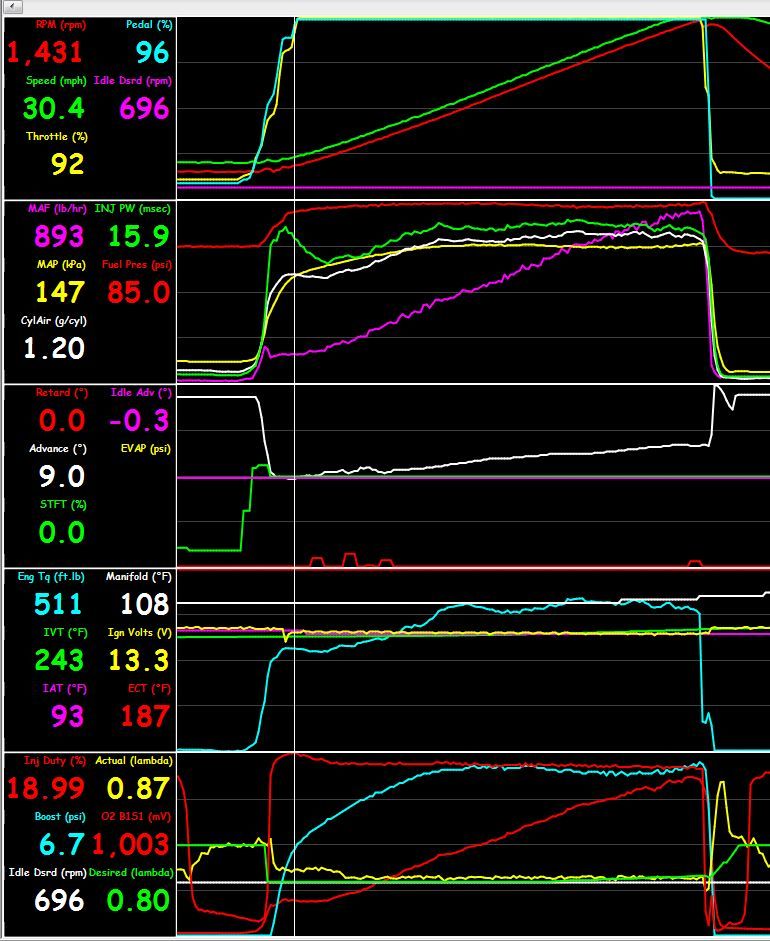
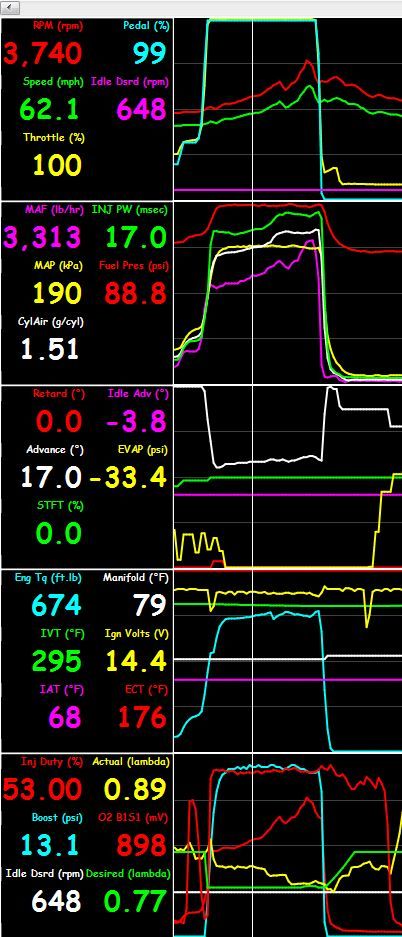
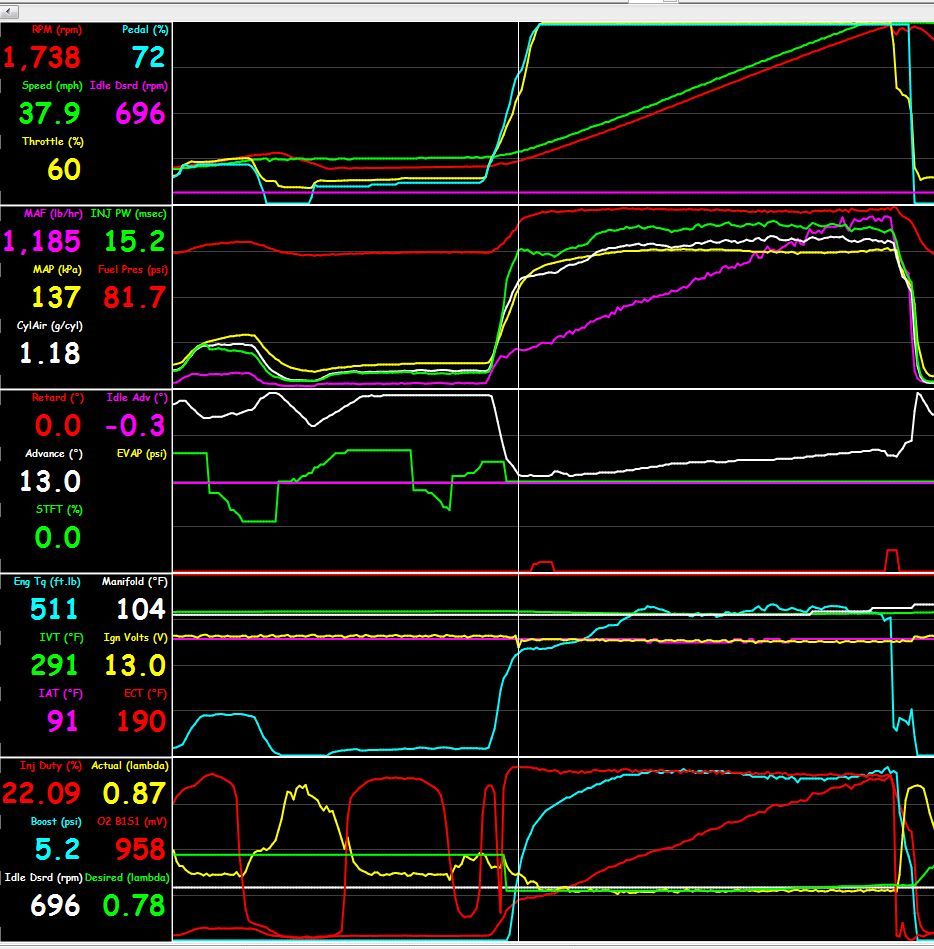

 Reply With Quote
Reply With Quote

